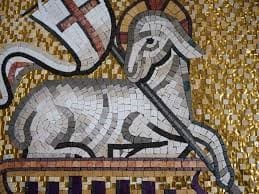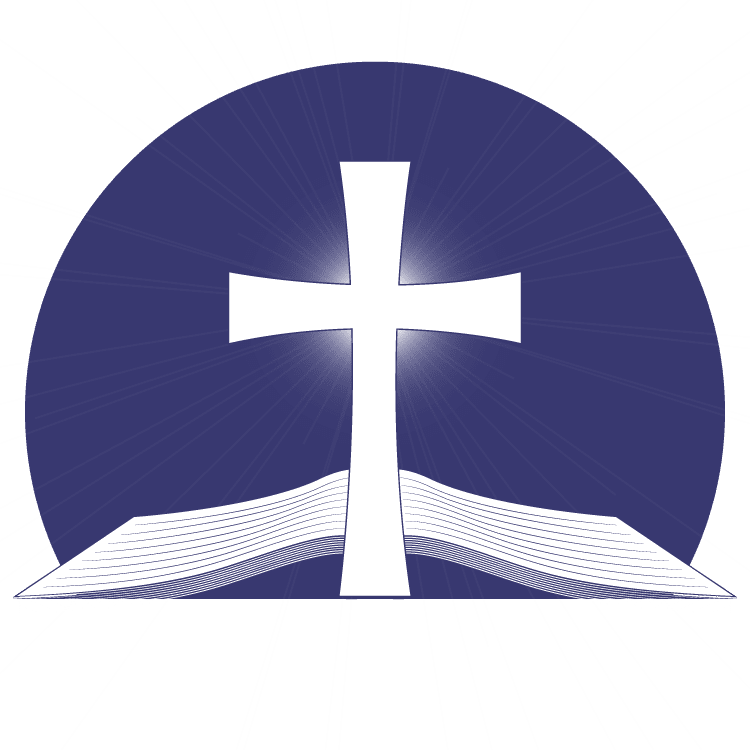The first three feasts, Passover, Unleavened Bread, and First Fruits, always occur in the spring and last eight consecutive days.
- The Passover – remembering the night the angel of death passed over the houses of the Jews in Egypt where the blood of the lamb had been placed on the doorposts – the final event that forced Pharaoh to free the Hebrews from their 400 years of slavery.
- In 1 Corinthians 5:7, Paul said, “Christ, our Passover, is sacrificed for us.”
- For Jesus to be our Passover Lamb, He had to fulfill that type to the letter, including the timing of the event itself.
- On Wednesday afternoon at 3:00 pm, the day of preparation for Passover, as the head of every Jewish family was sacrificing their own lamb, and the priests were pouring their blood on the altar for the remission of their sin, God the Father was crucifying the Lamb of God; shedding His blood for the remission of our sin.
- He was placed in the tomb before sunset on Wednesday, and He arose from the tomb at sunset on Saturday, which would be Sunday according to Jewish time.
- That’s why John declared Jesus: “the Lamb of God who takes away the sin of the world.”

The Feast of Unleavened Bread began the evening of the 15th of Nisan and continued for seven days, with the first and last days being “holy convocations,” or “High Sabbaths” devoted to rest and worship, during which time, fathers would remind their families how, when their forefathers were preparing for their exodus out of Egypt, they had no time for leavened bread to rise.
- They had to eat their bread without leaven, and God said, each year, during these 7-days, they were to eat only unleavened bread, and they were to remove all leaven from their houses.
- In the Bible, leaven is symbolic of evil, or sin, or false doctrine, because it expands and enlarges the original lump of dough.
- The yeast reproduces and changes the chemistry of the dough, and while it might make the bread taste better for the day, leavened bread quickly spoils and molds.
- Sin pollutes our bodies in the same way, which is why we must allow the Holy Spirit freedom to continually search our hearts, and to surface any sin we have allowed in, so we can confess it and remove it from our heart before it infects our whole being.
- The Feast of Unleavened Bread also pointed to Jesus’ sinless life; making Him the perfect sacrifice for our sins, for even though His body was in the grave three days and three nights, it did not decay or suffer corruption because He was the sinless Son of God: He was the true, Bread of Heaven.
The Feast of First Fruits – began on the 17th of Nisan.
The priest would wave a sheaf of barley before God, dedicating the coming harvest unto Him.
- Remembering the Jews counted their days from sunset to sunset, Jesus was crucified and buried on Wednesday and rose from the grave three days later after Sundown on Saturday evening, when the regular Sabbath was over, and the Feast of First-fruits began.
- Jesus’ resurrection was a wave offering unto God, dedicating the coming harvest of souls unto Him.
- In 1st Corinthians 15:20 and 23, the Apostle Paul said, “But now is Christ risen from the dead and become the first fruits of them that slept, for as in Adam all die, even so in Christ shall all be made alive, but every man in his own order, Christ the first fruits, afterward they that are Christ’s at his coming.”
The Feast of Harvest – which occurred 50 days later, became “Pentecost,” and was fulfilled in the coming of the Holy Spirit.
- The Feast of Trumpets – will be fulfilled on the day of the rapture of the Church, when, as Paul said, in 1st Thessalonians 4:16-17, “The Lord will descend from heaven with a shout, with the voice of the archangel, and with the trump of God; and the dead in Christ shall rise first, then we which are alive and remain shall be caught up together with them in the clouds to meet the Lord in the air.”
The Feast of Atonement – will be fulfilled, according to Hebrews 9:25-27, when Christ finally enters into the Holy of Holies and sprinkles His blood upon the Mercy Seat, covering all of our sins forever.
The Feast of Tabernacles – illustrated the Kingdom of God, which will be established on this earth after the Great Tribulation.
- In Revelation 7:9-17, John described it as a multitude of people of every tongue, tribe, and nation, standing before the throne of God, clothed in white robes, with palm branches in their hands, crying out: “Salvation to our God which sits upon the throne, and unto the Lamb. They fell upon their faces and worshipped God, saying, “Amen, Blessing and glory and wisdom, and thanksgiving and honor and power and might be unto our God forever and ever, Amen.”
The reason I belabored this study of these Seven Feasts is to let you see how the celebration of Jesus’ resurrection fits into God’s plan of salvation.
- The first three Feasts were fulfilled in Jesus’ death, burial and resurrection.
- The fourth Feast was fulfilled when the Holy Spirit came at Pentecost.
- While we cannot know the exact time when the final three feasts will be fulfilled, what we can know is that they will be fulfilled in the chronological order they were given.
God’s plan of our redemption was outlined in the Seven Feasts of Israel, and they are being fulfilled according to His schedule.
- You may be one of the millions that find your way to a place of worship on what you call Easter Sunday, and I’m glad you will. However, as Christians, we don’t celebrate an event or a date – we celebrate the resurrection of Jesus, for that is proof that He is our Savior and our Lord.
To intellectually agree with the historical facts regarding Jesus’ resurrection is not the same as expressing one’s personal faith in Him as Savior and submitting unto Him as Lord, and I pray you will be convicted and convinced of that truth before you finish reading this book, because the consequences of your decision are eternal.
Join us tomorrow as we continue our journey “From Gethsemane to Golgotha to Glory!”
